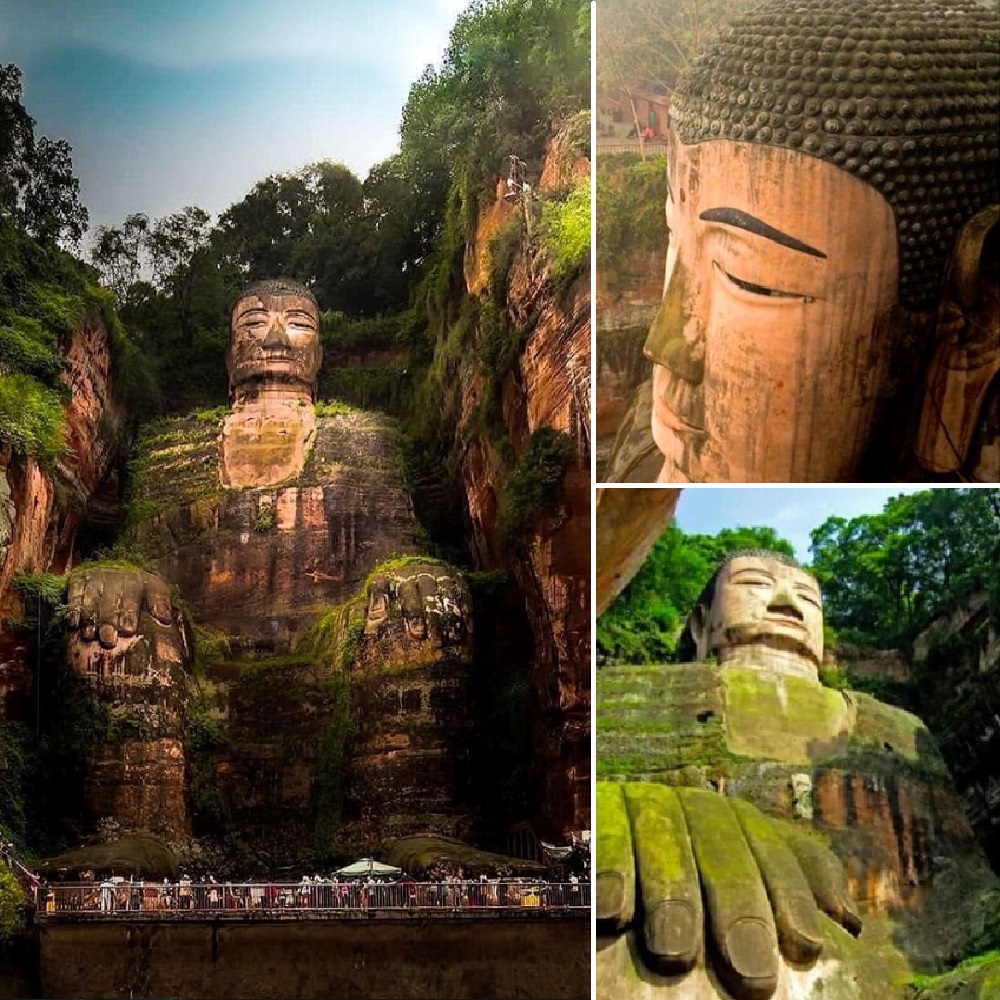The Leshan Giant Buddha, a monumental stone statue located near Leshan in Sichuan Province, China, is celebrated as the largest stone Buddha in the world, standing at a towering height of approximately 71 meters (233 feet).
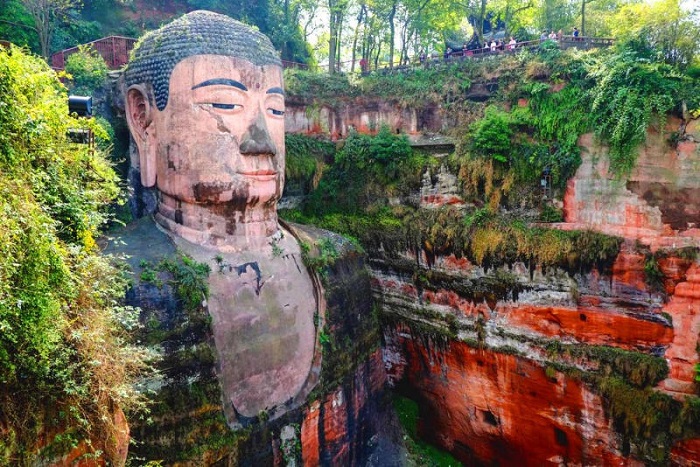
Carved into the cliffs at the confluence of the Minjiang, Dadu, and Qingyi rivers, this UNESCO World Heritage Site is a testament to the artistic and technical achievements of the Tang Dynasty. Construction of the statue began in the year 713 and was completed several decades later, showcasing the remarkable skill and craftsmanship of the era.

Legends surrounding the statue’s creation add an air of mystery and wonder to its allure. According to one such legend, a Chinese monk named Hai Tong initiated the construction of the Leshan Giant Buddha. It is said that Hai Tong hoped the presence of the Buddha would calm the turbulent waters at the confluence, which were notorious for causing boat accidents.
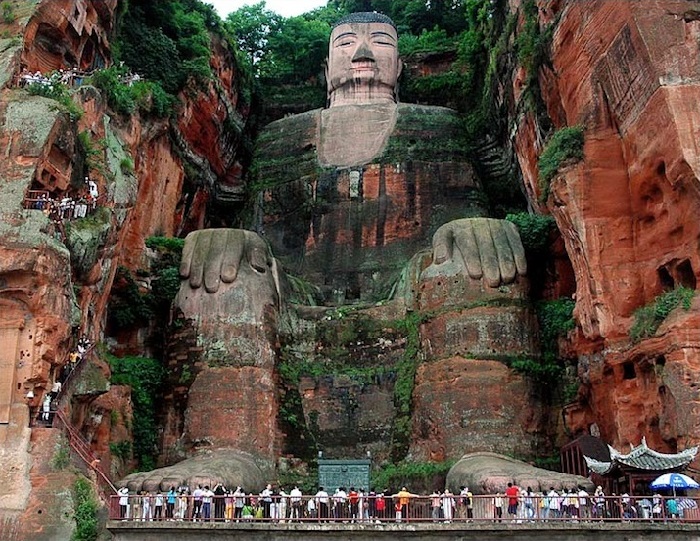
This tale reflects the spiritual and practical significance attributed to the statue’s location and continues to captivate visitors and scholars alike. The colossal Buddha features intricate details, such as its 28-meter (92-foot) wide shoulders and an 8.5-meter (28-foot) long pinky finger, highlighting the meticulous artistry and engineering prowess of its creators.
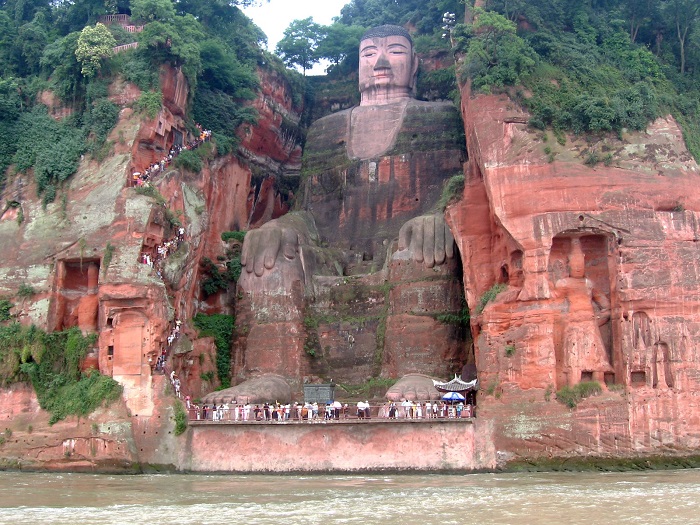
The serene facial expression and coiled hair reflect the fine artisanship involved in the statue’s design. Furthermore, the presence of a sophisticated drainage system, comprising hidden gutters and channels strategically placed within and around the statue, underscores the foresight and engineering ingenuity employed in its construction.
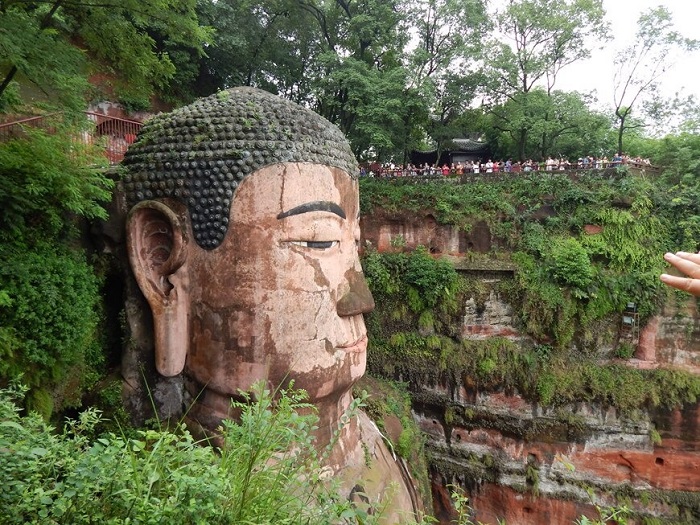
The Leshan Giant Buddha continues to be a significant cultural and religious symbol in China, attracting tourists and pilgrims from all over the world. Its historical significance, breathtaking natural setting, and the remarkable skill and engineering involved in its creation make it a must-see destination for those interested in China’s rich cultural heritage.
